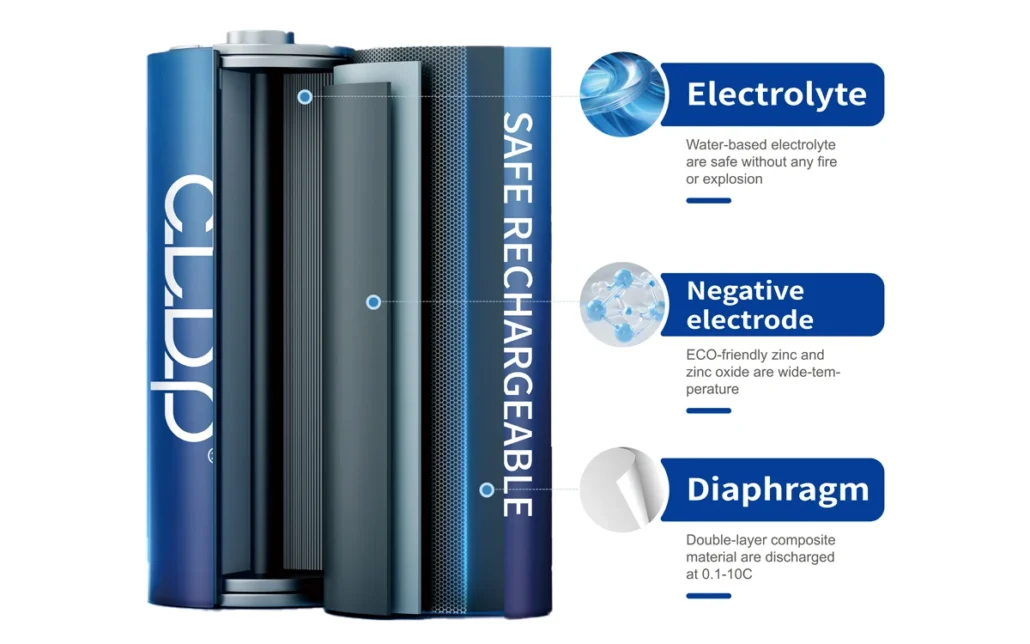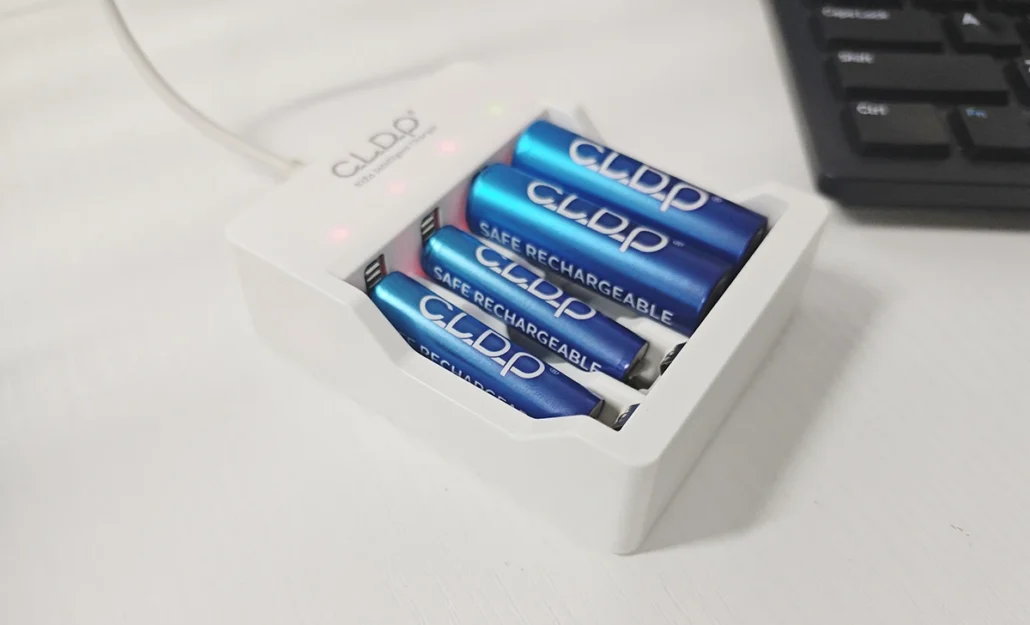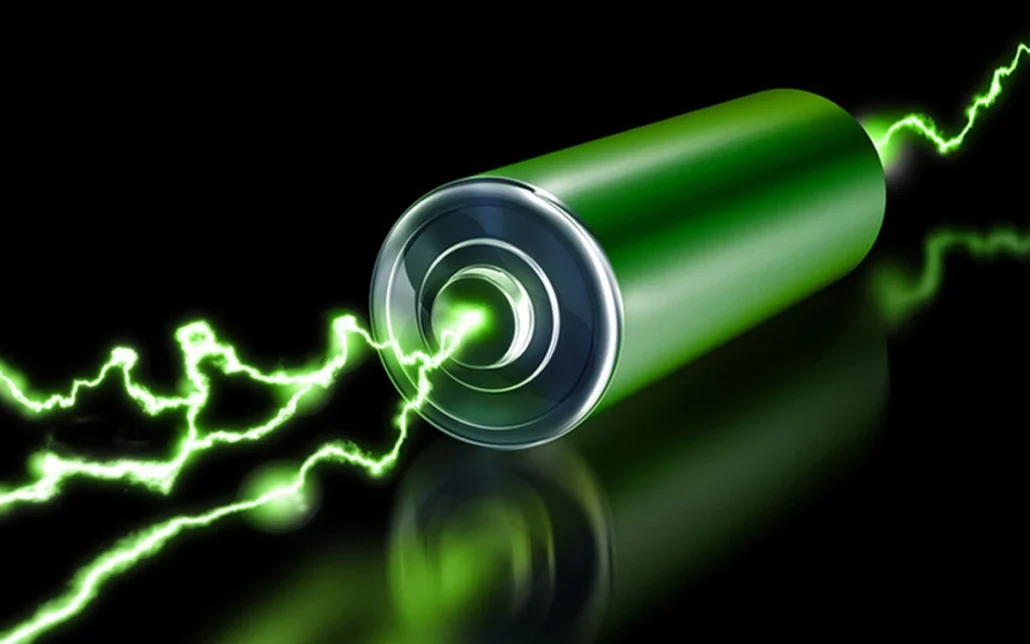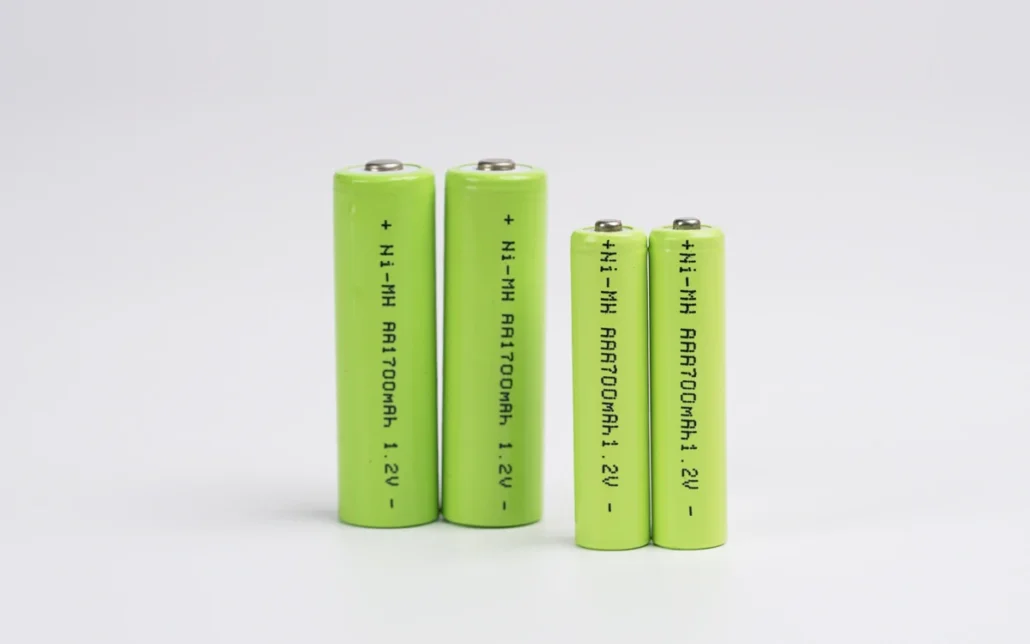The structure of zinc-nickel rechargeable battery is designed to maximize its performance and safety while ensuring that the battery can effectively carry out electrochemical reactions. Its basic components include positive electrode, negative electrode, electrolyte, separator and battery casing.
Positive electrode (cathode)
Material: The positive electrode is usually composed of nickel compounds, the most common form is nickel hydroxide (Ni(OH)2), and sometimes a small amount of cobalt or manganese is added to improve the conductivity and stability of the electrode.
Function: During the discharge process, the nickel (III) hydroxide (NiOOH) on the positive electrode is reduced to nickel (II) hydroxide (Ni(OH)2) while releasing electrons.
Negative electrode (anode)
Material: The negative electrode is mainly composed of zinc oxide, and the electrode has better stability.
Function: During the discharge process, the zinc on the negative electrode is oxidized to zinc (II) hydroxide (Zn(OH)2) while releasing electrons.
Electrolyte
Material: The commonly used electrolyte is potassium hydroxide (KOH) aqueous solution, and the concentration is usually between 25% and 30%.
Function: The electrolyte provides a medium for ion movement, promotes ion transport in electrochemical reactions, and ensures charge balance inside the battery.
Diaphragm
Material: The diaphragm of zinc-nickel batteries is usually made of materials such as PP through special processing.
Function: The function of the diaphragm is to isolate the positive and negative electrodes to prevent them from direct contact and short circuit, while allowing ions to pass through to maintain the electrochemical reaction in the battery.

Battery case
Material: The battery case is usually made of metal materials such as stainless steel or nickel-plated steel to protect the internal components from the external environment.
Function: Provide physical protection to prevent leakage while ensuring that the battery is safe and reliable during use.
Safety features
Leak-proof design: Prevent electrolyte leakage through special sealing technology.
Metal tempered shell: Enhance physical durability and prevent damage caused by external impact.
Automatic safety valve: When the internal pressure of the battery is too high, the safety valve will automatically open to release excess pressure to prevent the battery from exploding or rupturing.
Explosion-proof design: The internal structure of the battery is designed to prevent safety hazards such as overcharging and over-discharging.
Other components
Insulating gasket: placed between different components inside the battery to prevent short circuits.
Zinc-nickel rechargeable batteries are designed with high efficiency, long life and safety in mind, making them a very promising energy storage solution. With the continuous advancement of technology, the performance of zinc-nickel batteries is also constantly improving, and they are expected to be used in more fields in the future.




